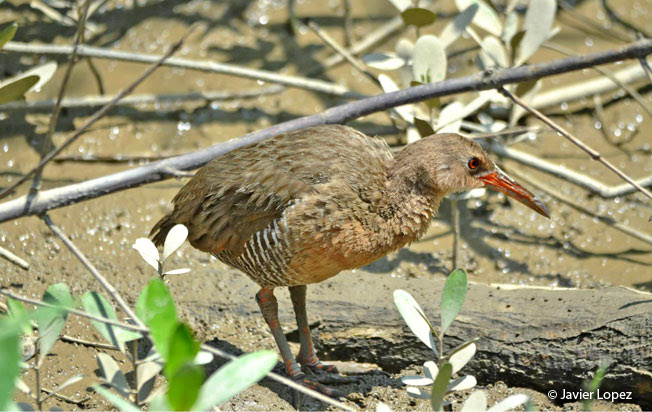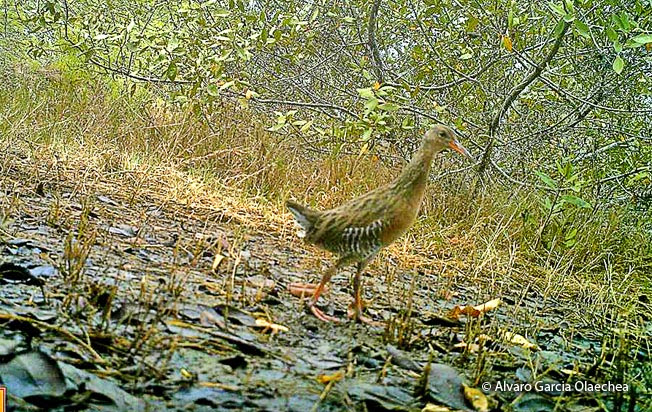Order: Gruiformes | Family: Rallidae | IUCN Status: Least Concern

Age: Adult | Sex: Unknown | Loc. Churute, SW Ecuador

Age: Adult | Sex: Unknown | Loc. Tumbes, Peru

Age: Adult | Sex: Unknown | Loc. Tumbes, Peru

Age: Adult | Sex: Unknown | Loc. Tumbes, Peru
Identification & Behavior: ~35 cm (14 in). The Clapper Rail is brown overall. The back is mottled with dusky. The belly is rich brown. The flanks, lower belly and vent areas are dusky barred with white. The bill is yellow/orange and black. It forages inside and in open mudflats near mangrove forest. It occupies the same habitat type as the more visible Rufous-necked Woodrail, but are not likely to be confused. The similar, but smaller Virginia Rail has gray sides of the head and rufous wings, but it is not known to occur in mangrove habitats.
Status: The status of the Clapper Rail is poorly known in Peru. It is rare in the mangrove forest of extreme southwest Peru in the department of Tumbes. It also occurs in Co, Ec, and Br.
Name in Spanish: Rascón Manglero.
Sub-species: Clapper Rail (Rallus longirostris cypereti) Taczanowski, 1878.
Meaning of Name: Rallus: Gr. A rail. longirostris: L. Longis= long and rostris= rostrum, beak.
Distribution Map
 Voice
Voice
 Voice
VoiceReferences:
-
- Species range based on: Schulenberg, T. S., D. F. Stotz, and L. Rico. 2006. Distribution maps of the birds of Peru, version 1.0. Environment, Culture & Conservation (ECCo). The Field Museum. http://fm2.fieldmuseum.org/uw_test/birdsofperu on 01/01/2015.